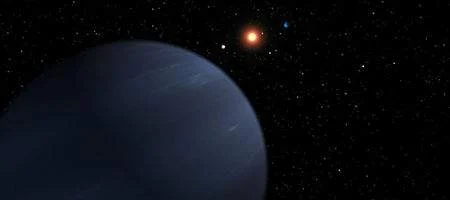Astronomers have discovered the densest rocky planet yet. Named 55 Cancri e, it’s 60 per cent larger in diameter than Earth but eight times as massive – making it twice as dense as Earth, and almost as dense as lead.

Around 40 light years from Earth, 55 Cancri e orbits its star – 55 Cancri A – so closely that its year is less than 18 hours long. “You could set dates on this world by your wrist watch, not a calendar,” says University of British Columbia astronomer Jaymie Matthews.
The surface temperature could be as high as 2,700 degrees Celsius, meaning that it probably doesn’t have an atmosphere and is a highly unlikely candidate for life.
But it’s interesting for astronomers: “The brightness of the host star makes many types of sensitive measurements possible, so 55 Cancri e is the perfect laboratory to test theories of planet formation, evolution and survival,” says lead author Josh Winn of MIT.
While the planet itself isn’t visible even through a telescope, its host star can be seen with the naked eye for the next two months on a clear dark night.
The first planet discovered around 55 Cancri A was found by a California-based team in 1997. Five more followed.
But last year, Rebekah Dawson, an astronomy PhD student at Harvard, and Daniel Fabrycky, a Hubble Fellow at UCSC, re-analyzed the data and proposed that the orbital period of 55 Cancri e could be much shorter than others had assumed.
On checking this out using observations from Canada’s MOST (Microvariability & Oscillations of
STars) space telescope, the research team found that transits were occurring every 17 hours and 41 minutes, just as Dawson and Fabrycky predicted.
The starlight is dimmed by only 1/50th of a per cent during each transit, telling the astronomers that the planet’s diameter is about 21,000 km – only 60 per cent larger than Earth.
“It’s wonderful to be able to point to a naked-eye star and know the mass and radius of one of its planets, especially a distinctive one like this,” says Winn.






